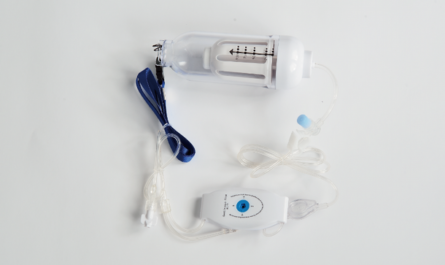
Medical carts have become an integral part of patient care and the smooth functioning of healthcare facilities. From small clinics to large hospitals, these carts help nurses and doctors easily transport medical equipment, supplies, and patient records. With healthcare becoming more technology-driven and mobile, medical carts offer a practical solution for healthcare staff. This article examines the importance of medical carts and how different types are helping improve patient care.
Types of Medical Carts
There are various types of medical carts designed for specific purposes within a hospital or clinic setup. Some of the common ones are:
Medication Carts: These sturdy carts are used by nurses to securely transport and dispense medications to patients on scheduled rounds. They have locked cabinets and drawers for organized medication storage. Some advanced medication carts come with computers and barcode scanners for digital medication management.
Emergency Carts: Also known as crash or code carts, these are fully-stocked with emergency equipment and medications needed to deal with life-threatening situations like cardiac arrest. They allow quick access to equipment like defibrillators, ventilation bags, IV supplies during medical emergencies.
Procedure & Equipment Carts: Different specialty procedure carts help transport equipment for exams, minor procedures, and treatments. Some examples are ultrasound carts, ophthalmology carts, endoscopy carts with storage for different scopes, cameras and other devices.
Patient Appointments & Records Cart: These help nurses and doctors make rounds with patient charts, laptops and other materials needed for exams, observations and bedside consultations.
Supplies & Store Carts: Used by staff to transport general supplies, equipment, linen and other materials needed on patient floors.
Benefits of Using Medical Carts
There are various benefits that healthcare facilities derive from effective use of different types of medical carts:
Increased Efficiency: Medical carts eliminate the need for multiple trips to retrieve items. Clinicians can have everything they need in one spot for patient visits, procedures, or emergencies. This saves precious time.
Organization: With labeled drawers, trays and compartments, medical carts help nurses and doctors keep supplies, files and equipment organized and within easy reach. This prevents wasting time hunting for items.
Safety: Emergency carts allow for a well-equipped crash response that can save lives. Secured medication carts ensure proper dispensation and storage of drugs per patients’ prescriptions. Carts with lockable areas also help keep sensitive items secure.
Mobility: Clinicians aren’t tethered to storerooms or fixed workstations. Carts enable care and treatments at patients’ bedsides or anywhere in the facility as needed. This is more convenient and comfortable for patients.
Data Access: Some carts are equipped with computers for accessing electronic health records, test results, or drug interaction databases at point of care. This aids informed clinical decision-making.
Cost Savings: In the long run, medical carts eliminate unnecessary expenses associated with multiple trips or lost/misplaced items. Their durable design and lockable components ensure investment returns through long product lifespan.
Infection Control: Regular disinfection of cart surfaces helps limit the spread of pathogens within hospitals. Robust carts can withstand regular cleaning without damage.
Medical Cart Maintenance
Proper maintenance is important to ensure medical carts deliver maximum benefit and safety over years of use. Some key maintenance aspects are:
Periodic Disinfection: All surfaces should be thoroughly wiped daily using hospital-grade disinfectant, especially after patient contact or procedure use.
Equipment Checks: Emergency equipment undergoes mandatory checks to ensure functioning. Computers and other devices receive updates/repairs.
Inventory Checks: Regular audits help track supplies and replenish items as needed without stockouts.
Preventive Maintenance: Small repairs and periodic replacement of parts like casters, batteries etc. extend product life.
Identification: Unique numbering aids quick cart retrieval and avoids thefts. RFID tags are also used in some advanced systems.
Proper Storage: Carts must be parked, charged and stored in clean, organized areas when not in clinical use.
User Training: Orientation ensures staff can operate medical cart tech and correctly carry/store specialty items.
With diligent upkeep, modern medical carts can deliver years of stalwart service improving safety, productivity and care standards at all healthcare facilities. When combined with other mobile technologies, these rolling solution pods will aid the continuous evolution of on-the-move patient-centric care.
Conclusion
In summary, medical carts have emerged as indispensable partners for healthcare workers. Their ability to conveniently transport supplies, records and specialized equipment wherever needed, in an organized manner, considerably boosts efficiency of clinical operations. With locked cabinets, computer connectivity and disinfection-friendly surfaces, today’s carts also address safety, data access and infection control needs. Scheduled maintenance keeps the fleet functioning optimally over the long term. As mobile care delivery models expand further, medical carts will remain at the core of smooth, patient-centric healthcare delivery both within and outside traditional facilities.
*Note:
- Source: Coherent Market Insights, Public sources, Desk research
- We have leveraged AI tools to mine information and compile it


